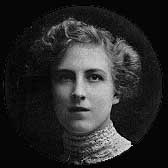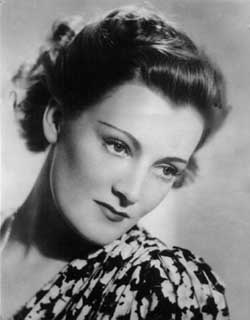 |
| Michael Redgrave |
To most Americans, actor Michael Redgrave sprang full-blown into existence in his 1938 debut movie The Lady Vanishes, an Alfred Hitchcock thriller. (A trailer from the movie appears at the bottom of this post.) In fact, he was already a highly successful performer on the British stage. Throughout his life he preferred these live performances, for which he had been trained, to work on the silver screen. He made movies only when he was broke, which considering his lavish and complicated lifestyle was fairly often. Today we are fortunate to have those few celluloid performances to judge his talent by.
 |
| Margaret Scudamore Redgrave |
 |
| Rachel Kempson, actress and wife of Michael Redgrave |
Rachel was the product of a loveless marriage. Her mother was such a primly raised Victorian girl that her husband on her wedding night reputedly said, "I'm afraid I have to ask you to do the most awful thing." Beatrice did her duty; Rachel had two brothers, but Beatrice had no gift for or interest in either maternity or her "marital duties." As a result Rachel, whose beauty and talent inspired a producer neighbor to sponsor her to the prestigious London School of Dramatic Art, never felt quite adequate or lovable.
Rachel fell instantly and completely in love with Michael during rehearsals, and indirectly proposed to him during the run. While he was very fond of her and flattered by her adoration, his previous experiences and interest had all been with men. Despite his misgivings about his sexual orientation––which he shared with her beforehand––they were married in 1935, only a few months after they had met.
 |
| Vanessa Redgrave |
Until her late teens, Vanessa was determined that she would become a ballerina, despite her height and gawkiness. What was unacceptable in a ballerina enabled a commanding stage presence, so in 1954 she gave up her hopes of dancing and enrolled in a prestigious drama school. Spoto quotes one of her classmates, Dame Judi Dench, who remembers her as "Too tall, too dependent on eyeglasses, too outspoken in her criticism of old-fashioned teaching methods, and one who gave scant evidence of the treasure buried within."
Vanessa was also fearlessly outspoken politically. She shared many of her sentiments with her father, who, perhaps because his lifestyle could not bear public scrutiny in that homophobic age, was not overtly political. He had been questioned by the US State Department about his political affiliations while making a movie in the US in 1954 (the infamous McCarthy years), and was not anxious to repeat the experience. In 1960, Vanessa co-starred with him in The Tiger and the Horse, a play about nuclear disarmament, and later participated in sit-ins with the antiwar Committee of 100. She spent a night in jail during one of these protests. Receiving an Oscar for her performance in Julia in 1978, she excoriated both "fascist and racist Nazi Germany" and "Zionist hoodlums." She continues both her work as an actress and her unflinching political activism to this day. Her daughters, Joely Richardson and the late Natasha Richardson, both became actors.
 |
| Corin Redgrave |
 |
| Lynn Redgrave |
 Donald Spoto is the author of over two dozen biographies of famous people, from Alfred Hitchcock and Jesus to Marlene Dietrich and Marilyn Monroe. While he was a personal friend of several of the Redgraves, his treatment of them is even-handedly sympathetic but factual, neither fawning nor malicious. I could have lived without knowing the dates and names of nearly every production that every family member appeared in, but the book also brims with a wealth of extremely personal anecdotes of the several generations of this remarkable family of gifted performers. They greatly enriched the twentieth century performance arts, and with the fourth generation reaching professional maturity, bid fair to do the same for the century to come.
Donald Spoto is the author of over two dozen biographies of famous people, from Alfred Hitchcock and Jesus to Marlene Dietrich and Marilyn Monroe. While he was a personal friend of several of the Redgraves, his treatment of them is even-handedly sympathetic but factual, neither fawning nor malicious. I could have lived without knowing the dates and names of nearly every production that every family member appeared in, but the book also brims with a wealth of extremely personal anecdotes of the several generations of this remarkable family of gifted performers. They greatly enriched the twentieth century performance arts, and with the fourth generation reaching professional maturity, bid fair to do the same for the century to come.Note: I received a free pre-publication copy of The Redgraves: A Family Epic, for review. It is published by Crown Archetype and will be released on October 2, 2012.
Trailer of Hitchcock thriller, The Lady Vanishes



